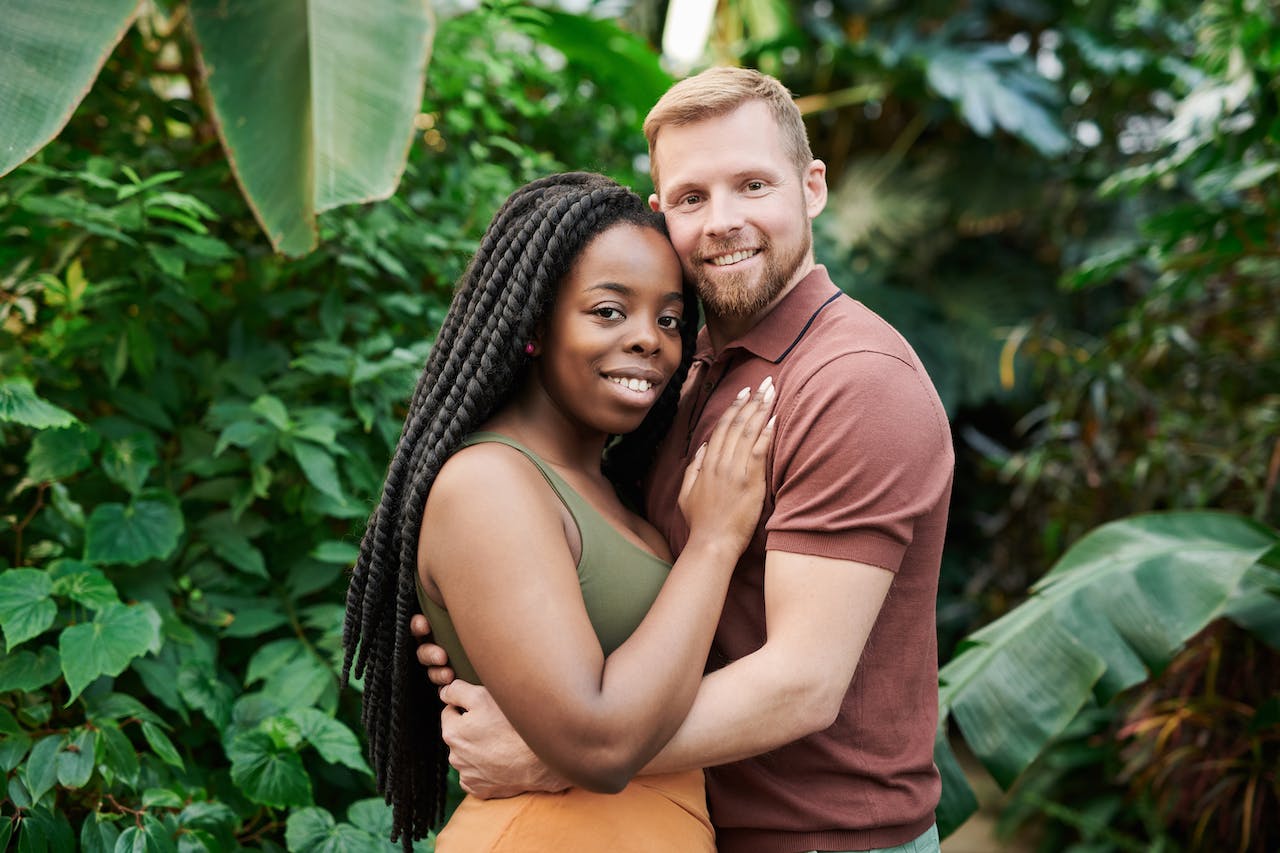When you first step into the world of ethical non-monogamy (ENM), terms like polyamory and polygamy might swirl around in conversations, often used interchangeably.
But let me stop you right there—these two words are not the same.
Understanding the difference can make all the difference when navigating or explaining your ENM journey.
Key Takeaways
- Polyamory and polygamy are distinct in structure and philosophy.
- Consent and marriage play key roles in differentiating the two practices.
- Recognizing their unique aspects helps in understanding modern relationship dynamics.
Breaking It Down
Polygamy typically brings to mind historical or religious contexts.
At its core, it refers to one person marrying multiple spouses.
This structure can break down further:
Polygyny: One man, multiple wives.
Polyandry: One woman, multiple husbands (though far less common in practice).
Polygamy is often rooted in tradition, hierarchy, and sometimes legality (or illegality, depending on where you live).
It frequently hinges on marriage and can carry a patriarchal undertone.
Polyamory, on the other hand, is more about consensual and loving relationships with multiple partners, regardless of gender or marital status.
There’s no emphasis on marriage or legal frameworks—it’s about emotional connections, trust, and communication.
Think of it as love without borders.

Key Differences
Consent and Autonomy
In polyamory, everyone involved is on board, knowing about and consenting to the multiple relationships.
In polygamous arrangements, especially traditional ones, the element of choice can sometimes feel less prominent (think arranged marriages or societal expectations).
Focus on Equality
Polyamorous relationships often strive for balance and equity between partners.
There’s a strong focus on open communication and shared decision-making.
Polygamy, in its traditional form, can sometimes reinforce unequal power dynamics.
Flexibility
Polyamory allows for various relationship structures—triads, quads, or relationship anarchies.
It’s adaptable and can shift based on the needs and desires of everyone involved.
Polygamy, however, often follows stricter, predefined formats.
Historical and Cultural Context
Polygamy has been practiced across cultures for centuries, often tied to economic, religious, or societal reasons.
In some cultures, having multiple wives was seen as a sign of wealth and status, while in others, it was a way to ensure population growth or form alliances between families.
Today, polygamy is still legal in certain parts of the world, particularly in Africa, the Middle East, and parts of Asia, but it is illegal in many Western countries.
Polyamory, on the other hand, is a relatively modern concept.
While non-monogamous relationships have always existed, the term “polyamory” gained traction in the late 20th century as part of the sexual liberation movements.
It aligns with ideas of personal freedom, breaking away from societal norms that prioritize monogamy as the only acceptable relationship model.

Relationship Dynamics in Polyamory
One of the beautiful aspects of polyamory is that there is no one-size-fits-all approach.
Some polyamorous individuals may have a primary partner with whom they share most of their life (often called “hierarchical polyamory”), while others may engage in “relationship anarchy”, where all relationships are seen as equally important.
Common relationship structures in polyamory include:
Triads: Three people in a relationship, either all connected or with one central figure connecting the two others.
Quads: Four people involved, with varying degrees of interconnectedness.
Solo Polyamory: Individuals who value their autonomy and do not seek to merge their lives fully with any partner.
The Role of Communication and Boundaries
Communication is the cornerstone of any successful polyamorous relationship.
Unlike traditional monogamous relationships, polyamory requires regular check-ins, open discussions about boundaries, and transparency about feelings.
Jealousy can still arise, but it is often seen as an opportunity for growth and reflection rather than something to suppress.
Polygamous relationships, particularly those rooted in religious traditions, may not always emphasize communication in the same way.
While some polygamous families have open dialogue, others may operate under stricter hierarchies where the voices of certain partners carry more weight.
Why Does This Matter for ENM?
If you’re part of the ENM community, knowing the distinction helps clear misconceptions.
When someone says, “Oh, so you’re into polygamy?” you can gently reply, “No, actually I practice polyamory, which is more about open, consensual relationships with multiple partners.”
Understanding this difference not only prevents awkward mix-ups but also educates others about the rich tapestry that is non-monogamous living.
It’s part of normalizing ENM in a world that’s still catching up.
Addressing Common Misconceptions
“Isn’t polyamory just cheating?”
No.
The foundation of polyamory is consent and openness.
Everyone involved knows about the other relationships and agrees to them.
Cheating involves deception and betrayal.
“Aren’t you afraid of STIs?”
Polyamorous individuals often prioritize safer sex practices, regular testing, and honest conversations about health.
“Doesn’t it get exhausting?”
Managing multiple relationships does require time and emotional bandwidth, but many polyamorous people find joy and fulfillment in the connections they build.
Proper boundary-setting and self-care help maintain balance.

Final Thoughts
Whether you’re new to ENM or a seasoned pro, embracing the nuances of these terms can deepen your understanding of your own relationships.
Polyamory invites you to explore love in its many forms while recognizing polygamy as a separate path—one that may not align with the values of mutual, consensual exploration that drive ENM.
So, next time someone asks about the difference, you’ve got the perfect conversation starter—and who knows?
Maybe that’s how you introduce someone to the wonderful, wide world of polyamory.
Frequently Asked Questions
How do polyamory and polygamy fundamentally differ in their relationship dynamics?
Polyamory involves engaging in multiple consensual intimate relationships without a hierarchical preference, whereas polygamy involves marriage to multiple partners, often with a hierarchical structure.
Where is polygamy legally accepted, and what regional variations exist?
Some countries where polygamy is legally practiced include parts of the Middle East, Africa, and Asia. Regulations and social acceptance vary widely between cultures and religions within these regions.
What are the distinctions between polygamy, polyandry, and polyamory?
| Term | Definition |
|---|---|
| Polygamy | Marriage to more than one person, typically a man to multiple women. |
| Polyandry | One woman married to multiple men. |
| Polyamory | Engaging in multiple, consensual romantic relationships regardless of marital status. |
What factors lead to polygamy being unlawful in many areas, as opposed to polyamory?
Legal factors contributing to the illegality of polygamy often include concerns over equity in marriage rights, the potential for abuse or coercion, and conflicts with marital laws.
Polyamory, not involving marriage, avoids these legal pitfalls and is generally not addressed by laws.
In what ways does a polyamorous relationship stand apart from an open relationship?
Polyamorous relationships focus on multiple romantic connections, with emotional involvement being a key component, while open relationships typically allow for extramarital sexual partners without the expectation of romantic love.
What is ‘Solopoly’, and where does it fit in the non-monogamy spectrum?
‘Solopoly’ refers to individuals who pursue non-monogamous relationships while prioritizing their autonomy and avoiding traditional relationship hierarchies or structures.

Anna is an anthropologist with a passion for Ethical Non-Monogamy (ENM) and gender and sexuality studies. Through ENM Living, she shares research-based insights and informative content to help others explore and navigate alternative relationship models. Anna is dedicated to creating an inclusive space that celebrates love in all its forms and supports those navigating the complexities of ENM.





